Common Plumbing Repairs
Regular maintenance can help prevent a small plumbing issue from becoming a major repair job. In the course of regular use, your residents, guests, and staff will encounter some of these common plumbing issues. Ask that they report any plumbing issues, even small ones, so you and your maintenance team can address them.
Here are some of the most common plumbing complaints and repairs:
Low Water Pressure
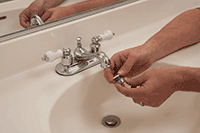
If water from the showerhead or faucet is coming out at slow trickle when it should be a steady, strong gush, you have low water pressure. Oftentimes a drop in water pressure is caused by a build-up of mineral deposits or sediment in the pipes, aerators, or showerheads. You can often minimize mineral buildup by avoiding harsh cleaning chemicals, and soaking the showerheads or aerators in vinegar. If the low water pressure is specific to one fixture, you can fix it by cleaning or replacing the showerhead or aerator to remove build up. If the low water pressure is affecting more than one room, it might be a bigger issue, such as a leak in the main or a problem with the pipes.
Slow Draining Sink or Tub
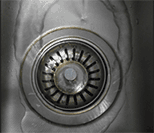
Eventually drains in the kitchen and bathroom will become clogged with debris causing a slow drain. To clear the blockage, first remove the strainer or drain cover and clear out any solids blocking the opening. In the bathroom, use a zip-it drain cleaning tool, which can be inserted into the drain to bring up any hair or muck stuck in the pipe. Another useful tool for clearing clogs is the ever-reliable plunger. The plunger creates a vacuum seal to dislodge debris stuck in the pipes. When the clog is deeper than a plunger or zip-it can reach, you may need to use a drain snake or unclogger hose.
Running Toilets
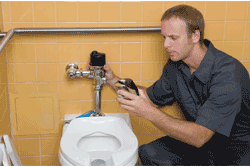
A running toilet is a noisy disturbance and will create a spike on the water bill. Although jiggling the handle seems like a solution, it isn't. Typically a running toilet is because the flapper, located inside the toilet back, is not sealing properly. Replacing the inner workings of the toilet is simple and quick and can help you save on your water bill.
Check and replace as needed:
- Overflow pipe: Prevents water from overflowing the tank and flooding into the room
- Flapper chain: Lifts the flapper valve at the bottom of the tank
- Flapper seal: Disc that attaches to the flapper hole to ensure a tight seal
- Float and fill tube: Controls the water flow from pipes into the toilet tank
The replacement parts for the toilet tank are inexpensive and require basic skills to install. If the toilet is beyond repair, it may be time to replace it. When selecting a new toilet consider low-flow and Watersense certified models to help save water and lower your utility bills.
Dripping Faucet
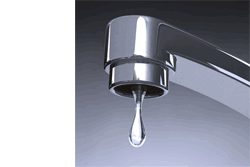
Even small leaks dripping from your faucet can run up your water bill. Typically, a slow drip is caused by a worn out washer. Washers are used to create a water-tight seal in the faucets and can get torn or worn over time, becoming inefficient. If a slow drip goes unattended for long time, the valve can become corroded and may also need replacing.
Under the Sink Pipes
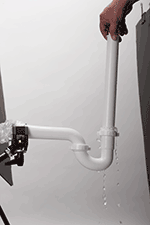
Leaks under the sink can sometimes go unnoticed until it's too late. Since that area is often used for storage, pipes can get knocked or bumped, weakening the connections. If water is dripping or leaking from pipes under the sink, the moisture can ruin the cabinet, floor, or subfloor. Oftentimes, the issue can be repaired by simply tightening a connection. Other, more complicated issues could be a leak in the drain line, or a faulty seal around the sink drain.
To find the leak, try these steps:
- Clear the area under the sink
- Dry the area and pipes with towels
- Place a bucket under the P-trap
- Run water and watch for the leak
Once you know where the leak is, you can tighten, fix, or replace the pipes and connection.
